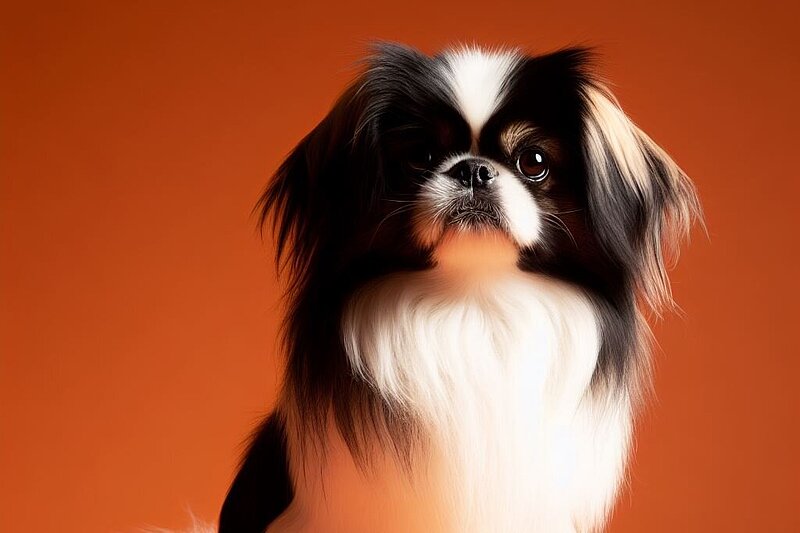The Japan Chin: a touch of Asia in your home
The history of Japan Chin: from the imperial court to the living room
The roots of the Japan Chin go back deep into the history of Asia. Originally bred in China, these dogs found their way to Japan, where they quickly became the favorites of the imperial family. The Japan Chin was seen as a symbol of nobility and prosperity and was often presented as a gift to foreign dignitaries. It was not until the 19th century that the first examples arrived in Europe and America, where they were also very popular.
Who is the Japan Chin suitable for?
The Japan Chin is an ideal companion for people who live in an apartment or urban environment. Due to its small size and moderate exercise requirements, it gets along well with little space. This breed is perfect for older people or individuals looking for a calm, loving dog. Families with older children can also enjoy a Japanese Chin.
Character: Charming and loyal
The Japanese Chin is known for its charming and often clownish character. These dogs are intelligent, playful and love to be the center of attention. They are very affectionate and loyal to their owners and enjoy the company of people. Although they can sometimes show a slightly independent spirit, they are generally very good-natured and friendly.
Appearance: Small but mighty
With its elegant, silky coat and striking facial features, the Japanese Chin is a real eye-catcher. Typically, an adult Japanese Chin weighs between 2 and 4 kilograms and reaches a shoulder height of around 20 to 27 centimetres. Their coat is usually black and white or red and white and requires regular grooming to prevent matting.
Grooming: Beauty needs attention
Grooming a Japanese Chin is relatively demanding, especially due to its long, silky coat. It should be brushed thoroughly at least twice a week to avoid matting and knots. The eyes and ears should be checked and cleaned regularly, as this breed can be prone to infections. Regular dental care is also important, as small dog breeds are often prone to dental problems.
Health: A robust little creature
Although the Japanese Chin is generally a healthy breed, there are some health issues to watch out for. These include breathing problems, which can be caused by the short muzzle, as well as patellar luxation and heart problems. Regular visits to the vet and good grooming will help to minimize these risks.
Exercise requirements: Less is more
The Japan Chin does not need much exercise, which makes it ideal for life in the city or in an apartment. Short daily walks and some playtime indoors are enough to keep him happy and healthy. This breed enjoys relaxing and spending time with its humans.
Training: A gentle hand is required
A gentle hand is required when training the Japanese Chin. These intelligent dogs respond well to positive reinforcement and loving consistency. Harsh methods or loud voices could intimidate them and destroy their trust. Short, varied training sessions help to keep the Japanese Chin's attention and teach him new tricks.
Behavior: Harmonious with children and animals
The Japanese Chin is generally friendly and gets on well with children and other pets. However, due to its petite size, small children should learn to handle it with care to avoid injury. These dogs love to be part of the family and enjoy participating in joint activities.
Recognition by the FCI
The Japan Chin is recognized by the Fédération Cynologique Internationale (FCI) and is listed in Group 9, Section 8. This recognition underlines the importance and popularity of this breed on an international level.
